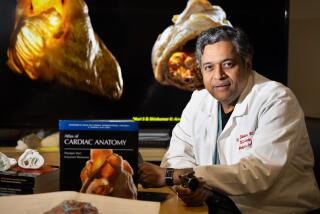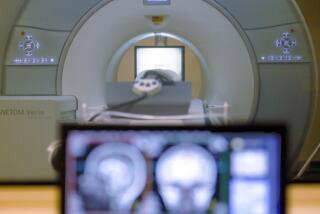DISCOVERIES
-----
Another Day
in the Frontal Lobe
A Brain Surgeon Exposes Life
on the Inside
Katrina Firlik
Random House: 288 pp., $24.95
âCOLLOID cysts are fun to remove,â writes neurosurgeon Katrina Firlik in her frank, unapologetic way. âA gelatinous goo often oozes from the center after you pop through the cyst wall.â Fun? Goo? A brain surgeon is âpart scientist, part mechanic.â Decisions must be made under great pressure, involving enormous risks. After four years of college, four years of medical school and a seven-year residency âtunnelâ (thatâs if you elect not to do a doctorate), you emerge âsquinting at the rest of the world.â There are about 4,500 neurosurgeons in the U.S., one for every 66,000 people. Only 5% are women. Firlik, who practices in Connecticut and teaches at Yaleâs School of Medicine, describes a typical day, from her arrival at the hospital at 5:15 a.m. through rounds and an astonishing number of life-and-death decisions. There is little time for âvexing social issuesâ far from immediate concerns.
This is a book of remarkable breadth, covering the state of the science and the art of the practice, the study of consciousness, personal stories (including the one time Firlik âlet [her] guard downâ and cried while delivering a diagnosis) and the future of cognitive enhancement, transcranial magnetic stimulation and something called âa brainlift.â In the end, what makes the profession inviting and protects the author from chronic depression is the sheer ability to, as she puts it, âactually do something.â
-----
The View From
the Center of
the Universe
Discovering Our Extraordinary Place in the Cosmos
Joel R. Primack and
Nancy Ellen Abrams
Riverhead Books: 400 pp., $26.95
OUR cosmic address: âEarth, Solar System, Orion Arm, Milky Way Galaxy, Local Group, Local Supercluster.â Cosmology, explains the husband-wife team of Joel R. Primack and Nancy Ellen Abrams, is the study of the myth and origin of the 14-billion-year-old universe. It is an effort to frame the universe, give it an identity, much as our ancestors did -- through science as well as intuition, the latter no longer being sufficient, given the data now available to us.
The authors review the evolution in thinking about the universe: the Ptolemaic, Copernican and Newtonian systems, to name a few. They offer marvelous ways to visualize Earth as a sphere or the universe as expanding or how we might once have conceived of our world: âImagine that it is the year 1200 CE, and you are a monk in a monastery somewhere in Europeâ; âImagine it is late afternoon and you are lying on your back in soft grass, looking up at the sky....â There are simple and useful diagrams -- for example, the inverted light cones showing the relationship between past and future. This is one of those truly creative books that crosses disciplines; it synthesizes the information we have so far to evoke a compelling new vision of why we matter in the universe and how we might begin to embrace it again and call it home.
-----
Letters to a Young Mathematician
Ian Stewart
Basic Books: 224 pp., $22.95
âOUR society consumes an awful lot of math, but it all happens behind the scenes. The reason is straightforward: thatâs where it belongs.â Ian Stewart, a professor of mathematics at the University of Warwick in England, crafts a series of letters to an imaginary correspondent named Meg, who contemplates a career in math and goes from high school to university, graduate work and finally tenure as a math professor. Her initial questions provoke the most interesting answers: Will she have to forgo beauty if she chooses a life in mathematics? Will computers replace mathematicians? Are proofs really necessary? âIâd say that my understanding of the geometry of the rainbow adds a new dimension to its beauty,â Stewart responds to the first. âGod is a mathematician,â he concludes, âand Sheâs a lot better at it than we are.â






